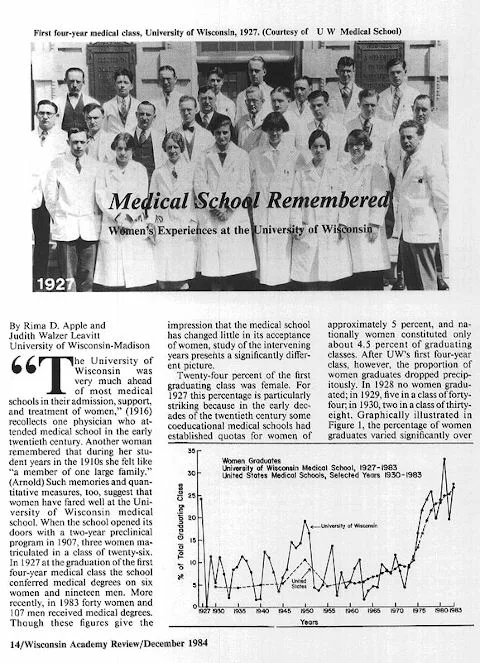Endowment allows expansion of integrative health program
A $5.5 million award from the Bernard Osher Foundation will allow UW Health and the UW School of Medicine and Public Health to bring integrative health to a broader swath of the community.
On Feb. 3, we honor the path that women in medicine have paved since 1849 as we recognize National Women Physicians Day.
This day celebrates the birthday of Elizabeth Blackwell, MD, the first woman to receive a medical degree in the United States in 1849. Her path toward matriculation was particularly arduous: Blackwell’s applications were rejected by 29 colleges simply because she was a woman.
According to the National Institutes of Health, the Geneva Medical College in New York accepted her application in 1847 after the all-male student body voted to let her in as a joke. Blackwell made her mark in the field despite facing gender discrimination. After graduating, she helped train nurses during the Civil War and opened a medical school for women that was also run by women.

The University of Wisconsin also has a relatively unique legacy of educating women physicians, as detailed in an article titled “Medical School Remembered: Women’s Experiences at the University of Wisconsin” that appeared in the Wisconsin Academy Review in December 1984. (The School of Medicine and Public Health was named as the Medical School until 2005.) It was authored by Rima D. Apple, PhD, professor emerita in the School of Human Ecology and School and Medicine and Public Health’s Department of Medical History and Bioethics, and Judith W. Leavitt, PhD, professor emerita in the Department of Medical History and Bioethics.
Through data and interviews, Apple and Levitt chart how the University of Wisconsin medical school was often ahead of its time in terms of its admission, support, and treatment of women. For example, the first cohort of the four-year medical degree program graduated six women and 19 men, a rarity at the time. The article also has data on application and acceptance rates of women and trends over time.
At medical schools throughout the nation as well as our own, women faced challenges due to gender bias and discrimination, even when admitted to medical school. For example, women were asked inappropriate admissions interview questions about marriage and family that were not asked of male applicants. In the program, they experienced derogatory comments from both peers and faculty — including school leadership — and had their commitment to medicine called into question.
Over the course of history, women in the UW Medical School advocated for change and found spaces to gather and build community. For example, the authors write: “Since the male medical fraternity excluded females, women students in the 1920s formed a local chapter of Alpha Epsilon Iota. For several decades AEI held frequent gatherings of students and faculty for mutual support.” In addition, even after the national organization disbanded in the mid-1950s, female students continued to meet informally to support each other.
The authors of the article report that most women had an overall positive experience in the UW Medical School but had to overcome many obstacles and exhibit incredible resilience.
Fast-forward to 2019, when the American Association of Medical Colleges announced data showing that women represented a majority of medical school students for the first time ever. While a milestone as it relates to inclusivity of students identifying as women, AAMC also noted the significant work that remains in the face of only modest gains in the matriculation of students in many underrepresented groups, as well as continued barriers women and underrepresented groups face once in medical school and throughout their careers.
In the School of Medicine and Public Health today, more than half of the school’s department chairs and administrative leaders are women – markedly higher than the national average of 14 percent. There several resources across the school and in departments for women physicians and scientists, including:
“National Women Physicians Day is an important opportunity to recognize our women physician colleagues and honor our predecessors who blazed the trails we now walk with relative ease,” says Mary Westergaard, MD, associate professor of emergency medicine and current president of GWIMS. “There is still much work to be done, and SMPH is fortunate to have a community of women physicians passionate about elevating those around them and together driving needed change. These themes connect us both to our past and to a better future.”
On National Women Physicians Day 2022, we say thank you to our remarkable women physicians at UW Health and the School of Medicine and Public Health.